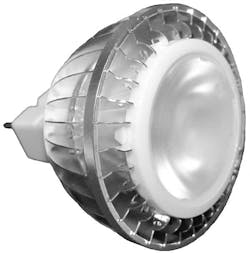EPA further clarifies Energy Star V1.1 lamp requirements, adds CBCP tool
The US Environmental Protection Agency continues to tune V1.1 of the Energy Star Lamps specification even as the V1.0 specification is being adopted in the LED lamp market.
The US Environmental Protection Agency (EPA) has distributed yet another letter regarding proposed changes to the Energy Star Lamps specification that will be adopted in the transition from V1.0 to V1.1 specifications due this fall. The clarifications impact decorative lamps. The EPA also has posted a center beam candle power (CBCP) calculation tool in the form of a Microsoft Excel spreadsheet that manufacturers can use in characterizing MR16 directional solid-state lighting (SSL) products.
We covered some proposed changes in the decorative lamp category along with some changes in line-powered MR16 lamps back in late May. Based on comments on the May proposal, the EPA will add further details on lamps that will not be listed in Energy Star.
The agency has approached the changes because some consumers could misconstrue the energy-efficiency and light-distribution benefits of some decorative products that look much like omnidirectional A-lamps. The EPA will simply not recognize lamps with G18.5 and G19 bases that don't deliver an omnidirectional beam distribution.
Still, to eliminate any ambiguity, the EPA is adding explicit verbiage specifying that the exclusion includes lamps with diameters between 41 and 78 mm (similar to A-lamps) with the exception of G16.5- and G25-based lamps. The agency will add further detail in section 14 of the specification on lamp dimensions regarding acceptable length-to-diameter ratios.
The EPA is asking for any additional feedback on the additions by August 6. You can find complete details including how to comment on the Energy Star Lamps website.
CBCP tool
Meanwhile, in unrelated news, the EPA has posted an Excel spreadsheet tool that can be used to characterize the performance of directional lamps such as MR16 products in terms of CBCP. Specifically, the new tool is designed for usage with the line-voltage GU-10-base MR16 lamps that were also part of a prior story in terms of changes to the Energy Star specification.
Related links:
EPA publishes final Energy Star Lamps V1.0 specification
EPA publishes the final draft of the Energy Star Lamps specification
EPA releases draft 4 of the Energy Star Lamps V1.0 specification
About the Author
Maury Wright
Editor in Chief
Maury Wright is an electronics engineer turned technology journalist, who has focused specifically on the LED & Lighting industry for the past decade. Wright first wrote for LEDs Magazine as a contractor in 2010, and took over as Editor-in-Chief in 2012. He has broad experience in technology areas ranging from microprocessors to digital media to wireless networks that he gained over 30 years in the trade press. Wright has experience running global editorial operations, such as during his tenure as worldwide editorial director of EDN Magazine, and has been instrumental in launching publication websites going back to the earliest days of the Internet. Wright has won numerous industry awards, including multiple ASBPE national awards for B2B journalism excellence, and has received finalist recognition for LEDs Magazine in the FOLIO Eddie Awards. He received a BS in electrical engineering from Auburn University.

